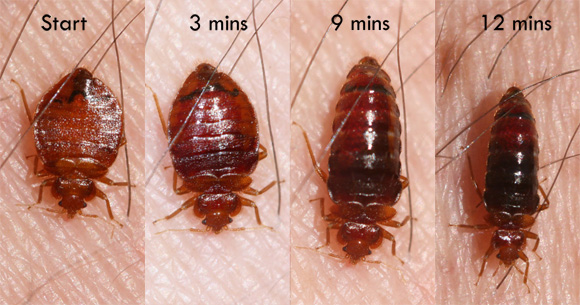What do bed bugs do?
Bed bugs like to feed on human blood. The blood is necessary to complete its life cycle which is split up into five nymph stages each stage requiring a blood meal. The need for a blood meal is also necessary for females to reproduce and lay eggs. The bed bugs like to stay near the hosts and will travel long distances to get to them.
- Bed bugs (nymphs and adults) feed at night and hide in crevices during the day.
- Common hiding places for bed bugs include: seams in mattresses and box springs, cracks in bed frames, under loose wallpaper, behind picture frames, and inside furniture and upholstery.
Bed bugs like to hide during the day time hours in the smallest corners, cracks, crevices, and other holes. They usually congregate by day on rough dry surfaces in dark recesses of beds, bedding, clothing, and furniture. They are active at night and will crawl considerable distances to reach sleeping human hosts for a blood meal. Most people develop lumps or swellings when bitten, an allergic reaction to the saliva the bugs release as they feed. Bed bugs do not transmit diseases to humans.
Feeding habits:
Bed bugs do not burrow under your skin to feed, but use piercing, sucking mouthparts to gain access to blood. When they feed, they inject their saliva into skin, causing allergic reactions and skin irritation, much like mosquitoes. However, their bites are often not felt at the time.
- Bed bugs can survive without food for 80 to 140 days; older stages can survive longer without feeding than younger ones.
- Adults have survived without food for as long as 550 days.
- A bed bug can take six times its weight in human blood during a nighttime feeding, and feeding can take 3 to 10 minutes.
Bed bugs are attracted to the heat, moisture, and carbon dioxide emitted from their chosen hosts. They feed every three to four days, and one feeding can take anywhere from 5 to 15 minutes. Bed bugs can survive a few months without food, remaining dormant until they find a host. While they are often associated with dirty places and disease, bed bugs have not been found to carry or transmit any diseases.
Image source: citybugs.tamu.edu



